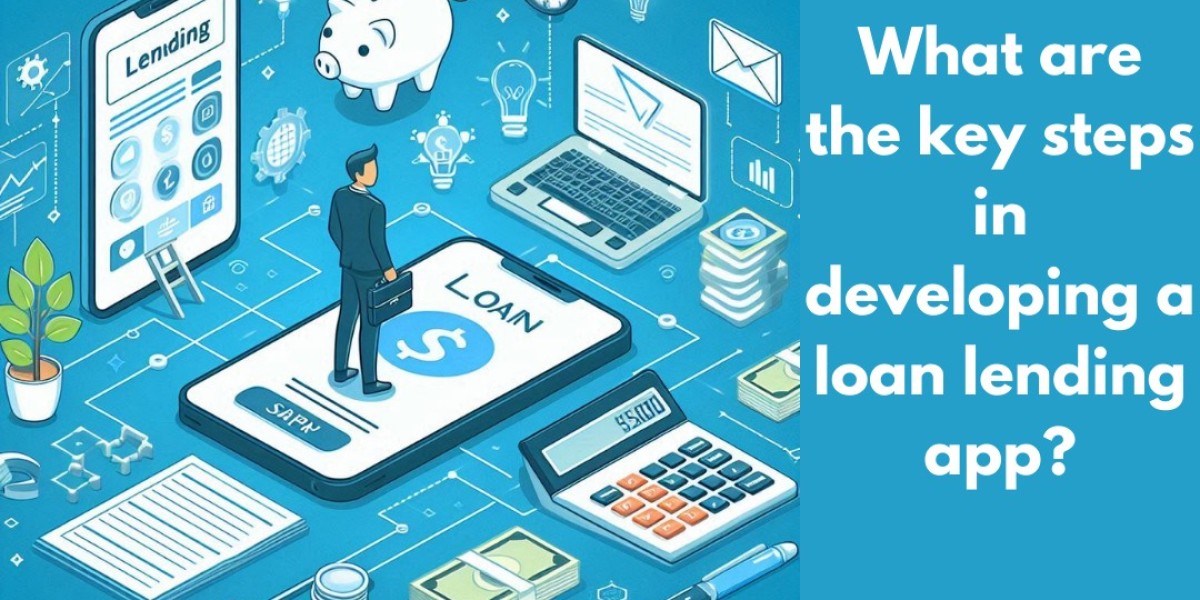Introduction
In today's digital world, loan lending apps have revolutionized the way people access financial services. Whether you're a fintech enthusiast or a business owner looking to venture into the financial sector, developing a loan lending app can be a lucrative opportunity. In this article, we'll explore the key steps in developing a loan lending app, providing a comprehensive guide to help you navigate the process with ease.
Understanding the Loan Lending Market
Before diving into the development process, it's crucial to understand the loan lending market. The rise of digital finance has made it easier for people to secure loans from the comfort of their homes. However, the competition is fierce, and standing out requires a well-thought-out strategy and a user-centric approach.
Key Steps in Loan Lending App Development
1. Define Your Niche
The first step in developing a loan lending app is to define your niche. Do you want to focus on personal loans, payday loans, business loans, or a combination of these? Identifying your niche will help you tailor your app's features and functionalities to meet the specific needs of your target audience.
2. Market Research and Analysis
Conduct thorough market research and analysis to understand the existing players, their strengths and weaknesses, and the demands of your potential customers. This will give you insights into what works and what doesn't, allowing you to design an app that stands out.
3. Essential Features for a Loan Lending App
A successful loan lending app should include the following features:
User Registration and Profile Management: Easy sign-up and profile creation.
Loan Application Process: A streamlined process for applying for loans.
Loan Calculator: A tool for users to calculate loan amounts and repayment schedules.
Secure Payment Gateway: Integration of secure payment methods.
Notifications and Alerts: Reminders for due payments and updates.
Customer Support: Easy access to customer support services.
4. Choose the Right Technology Stack
Selecting the right technology stack is crucial for the app's performance, scalability, and security. Common technologies include:
Frontend: React Native, Flutter
Backend: Node.js, Django
Database: PostgreSQL, MongoDB
Cloud Services: AWS, Google Cloud
5. Design and User Experience (UX)
A seamless and intuitive user experience (UX) is vital for the success of your app. Focus on creating a clean and user-friendly interface that makes navigation easy. Remember, a well-designed app can significantly reduce the bounce rate and improve user retention.
6. Backend Development and Integration
The backend of your app is responsible for handling data storage, business logic, and integrations. Ensure that your backend development is robust and capable of supporting various third-party integrations, such as payment gateways, credit scoring systems, and identity verification services.
7. Security and Compliance
Given the sensitive nature of financial data, security and compliance should be top priorities. Implement strong encryption methods, secure data storage, and regular security audits. Additionally, ensure your app complies with relevant financial regulations, such as GDPR and PCI-DSS.
8. Testing and Quality Assurance
Before launching your app, conduct thorough testing and quality assurance to identify and fix any bugs or issues. This includes functional testing, performance testing, and security testing. A well-tested app ensures a smooth user experience and builds trust with your users.
9. Launch and Marketing
Once your app is ready, it's time to launch and market it. Develop a marketing strategy that includes social media promotion, influencer partnerships, and SEO optimization. Engaging with your target audience and creating buzz around your app can drive downloads and user engagement.
Frequently Asked Questions (FAQs)
Q1: What is the cost of developing a loan lending app?
The cost of developing a loan lending app depends on various factors, including the app's features, design complexity, and technology stack. On average, it can range from $50,000 to $200,000.
Q2: How long does it take to develop a loan lending app?
The development timeline can vary based on the app's complexity and the team's expertise. Generally, it takes around 4 to 9 months to develop a fully functional loan lending app.
Q3: What are the legal requirements for a loan lending app?
Loan lending apps must comply with financial regulations, such as KYC (Know Your Customer), AML (Anti-Money Laundering), and GDPR. It's essential to consult with legal experts to ensure compliance.
Q4: How can I ensure the security of my loan lending app?
Implementing strong encryption, secure payment gateways, and regular security audits are essential for protecting user data. Additionally, staying updated with the latest security protocols can help prevent breaches.
Q5: Can I integrate AI features in my loan lending app?
Yes, integrating AI features such as chatbots for customer support and credit scoring algorithms can enhance the user experience and streamline operations.
Conclusion
Developing a loan lending app development is a multifaceted process that requires careful planning and execution. By following the steps outlined in this guide, you can create a robust and user-friendly app that meets the needs of your target audience. Remember, the key to success lies in understanding your market, offering valuable features, and prioritizing security and compliance. Happy developing!








